I am trying to calculate two volumes which are related to each other. In this case as one volume increases it means more of the other volume is possible.
My code is as follows:
Plot[{(6.78966*10^22)(b)},{((9.0226522*10^22)(x))}, {(b, 0, 5.5*10^6),(x, 0, 5.5*10^6)}]
I want this to be plotted on one graph, so it can show the relationship of increasing one volume while the other decreases. However, I can't get this to display in wolfram alpha, a graphing calculator, or mathematica. It seems extremely simple and I am probably just making a dumb error.
The error that is being thrown by mathematica is: ( " cannot be followed by " b,0,5.5*10^6)
But when I try it without the parenthesis it says I do not have enough rules to define my function. Is there a better way to do this?
What I am trying to do is find how many cm^3 of plutonium is needed to convert cm^3 of cadmium. I have done the relationships, but now I am trying to plot it. The maximum volume that can be utilized is 5.5*10^6. So I want one line to end when all of the cm^3 of the volume are cadmium and the other to end when all of the cm^3 is plutonium. This will allow me to find the point in which they intersect optimizing my problem.
